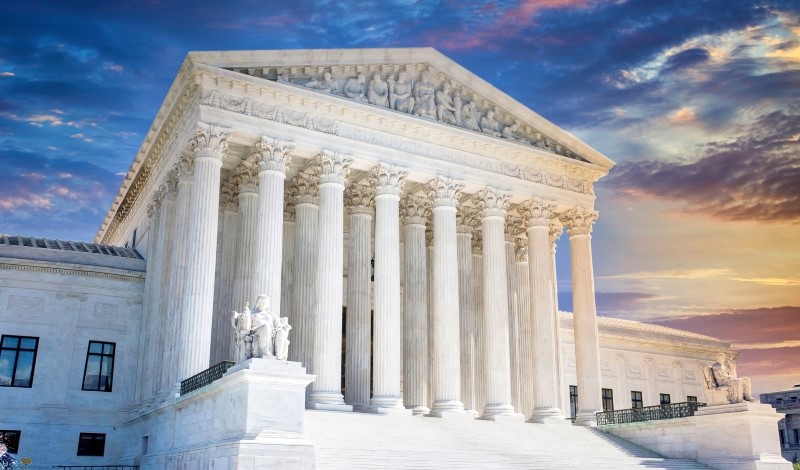
Legal scholars discuss the Court’s most significant regulatory decisions of the last term.
In the face of increasing public scrutiny, the U.S. Supreme Court addressed a series of significant regulatory decisions throughout its recently completed 2022-2023 term.
The Court’s recent decisions will affect a range of important administrative law, regulatory, and human rights issues, including the role for affirmative action in undergraduate admissions, legal protections for same-sex individuals, the viability of President Joseph R. Biden’s student loan debt relief program, and the scope of the U.S. Environmental Protection Agency’s authority over water pollution.
The 2022-2023 term was also notable as it was the Court’s first with Justice Ketanji Brown Jackson serving on its bench.
The Regulatory Review has invited leading lawyers and scholars to comment on the Court’s major regulatory decisions from its recent term. The essays featured in this series analyze the legal issues surrounding prominent cases and provide insight into the recent term’s impact on law, regulation, and society.
The contributors to this series are: Robin Kundis Craig, USC Gould School of Law; Monika U. Ehrman, Southern Methodist University School of Law; Michael Knoll, University of Pennsylvania Carey Law School; Ronald Levin, Washington University School of Law; Ruth Mason, University of Virginia Law School; Cara McClellan, University of Pennsylvania Carey School of Law; Robyn Powell, University of Oklahoma College of Law; Crawford Schneider, University of Pennsylvania Carey Law School; Amanda Shanor, University of Pennsylvania Wharton School; Kate Shaw, Cardozo Law School; Matthew Lee Wiener, University of Pennsylvania Carey Law School; and Tobias Barrington Wolff, University of Pennsylvania Carey Law School.
Punting Social Media Company Liability to Congress
July 10, 2023 | Amanda Shanor, University of Pennsylvania Wharton School
The Supreme Court affirms social media companies’ business models, dodging for now the issue of liability for harmful speech.
For Now, Court Is Cool with California in Charge
July 11, 2023 | Michael Knoll, University of Pennsylvania Carey Law School and the Wharton School, and Ruth Mason, University of Virginia Law School
The Supreme Court narrowly rejects a Dormant Commerce Clause challenge to a California pork law.
Supreme Court Unlocks New Path to Relief for Disabled Students
July 12, 2023 | Robyn M. Powell, University of Oklahoma College of Law
The Court opens a new avenue for redress for disabled students seeking an equitable education.
The Supreme Court’s Wetland Saga Continues
July 13, 2023 | Monika U. Ehrman, Southern Methodist University School of Law, and Robin Kundis Craig, USC Gould School of Law
EPA’s regulatory authority is limited by the Supreme Court’s interpretation of “waters of the United States.”
What’s Left, and What’s Next, for Racial Diversity in College Admissions
July 17, 2023 | Cara McClellan, University of Pennsylvania Carey Law School
The Supreme Court has severely limited more than 45 years of precedent holding it constitutional for colleges and universities to consider race in admissions.
Constitutional Challenges to Agency Adjudication
July 18, 2023 | Matthew Lee Wiener, University of Pennsylvania Carey Law
The Supreme Court grants district-court jurisdiction in an opinion hampering agencies’ adjudicatory authority.
Standing and Vacatur in U.S. v. Texas
July 19, 2023 | Ronald Levin, Washington University School of Law
The U.S. Supreme Court holds that states lack standing to challenge immigration prioritization guidelines.
With Its Student Loan Decision, the Court Again Limits Agency Authority
July 20, 2023 | Kate Shaw, Cardozo Law School, and Crawford Schneider, University of Pennsylvania Carey Law School
In Biden v. Nebraska, the Supreme Court again asserts its own authority to make society’s most important policy choices.
303 Creative and Constitutional Law by Stipulation
July 24, 2023 | Tobias Barrington Wolff, University of Pennsylvania Carey Law School
The Supreme Court undercut antidiscrimination law in a case where the key issues were stipulated by the parties, leaving lower courts little guidance in how to apply its ruling.



